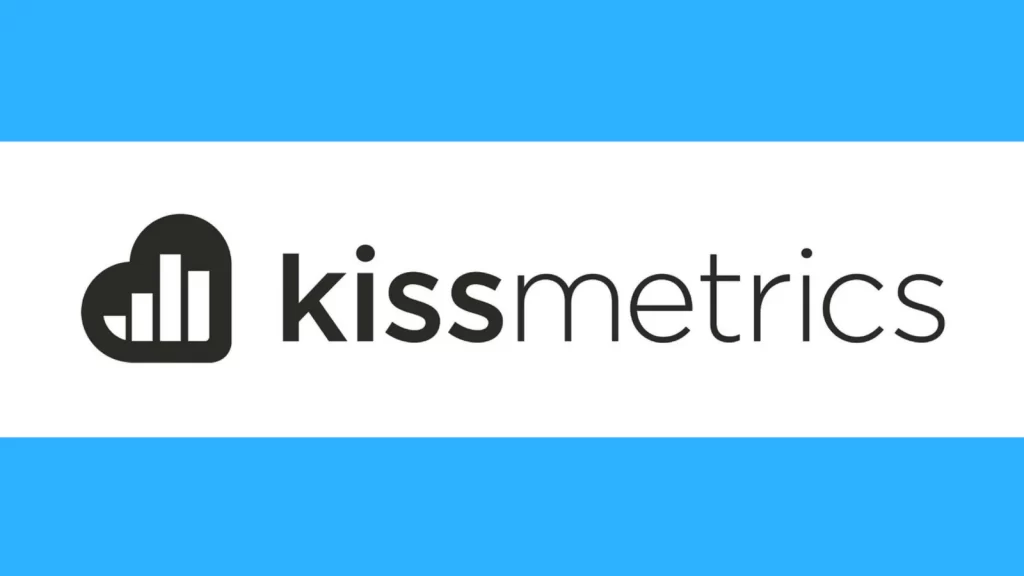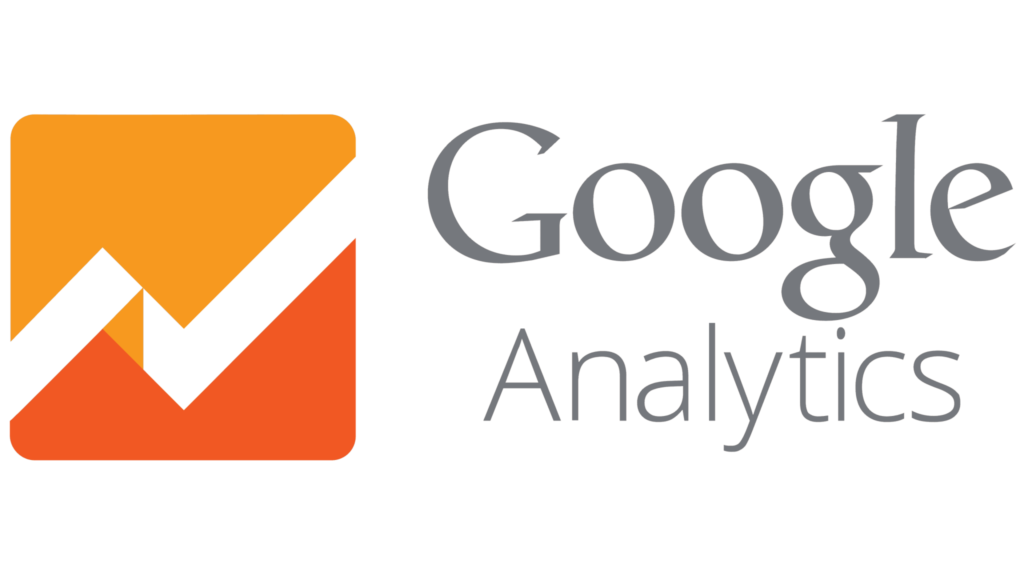If you’re on the hunt for powerful analytics and data-driven insights to enhance your online presence, you’ve come to the right place! We understand the importance of choosing the best tool to track and optimize your website’s performance. In this article, we’ll delve into the world of Parse.ly alternatives, providing you with a detailed breakdown of the top options available in the market. Let’s dive right in!
Table of Contents
- Introduction to Parse.ly
- Key Features of Parse.ly
- Limitations of Parse.ly
- Understanding the Power of Data-Driven Decision Making
- How Parse.ly Works: Unraveling the Analytics Magic
- Leveraging Parse.ly Alternative for Content Optimization
- Utilizing Parse.ly Alternative for Audience Segmentation
- Top Parse.ly Alternatives
- Google Analytics – The Industry Giant
- Matomo – Embrace the Open Source Approach
- Mixpanel – Unveil User Behavior Insights
- Kissmetrics – Unlock Customer Journey Understanding
- Adobe Analytics – Enterprise-Grade Solution
- Clicky – Real-Time Web Analytics
- Woopra – Customer-Centric Analytics
- Crazy Egg – Visualize User Interaction
- Chartbeat – Real-Time Content Insights
- Heap Analytics – Simplified Event Tracking
- The Importance of Data Privacy and Security
- Conclusion
Introduction to Parse.ly

In today’s digital landscape, where content rules the online world, web analytics tools play a vital role in understanding user behavior and optimizing website performance. One such powerhouse in the realm of analytics is Parse.ly, a leading web analytics platform that empowers businesses to gain valuable insights into their digital content performance.
Key Features of Parse.ly
Parse.ly offers a diverse range of features that cater to the needs of content creators, marketers, and publishers alike:
- Real-Time Analytics: Get immediate feedback on content performance as it happens with Parse.ly’s real-time data tracking. Whether you want to monitor the impact of a newly published article or track the performance of a marketing campaign, real-time analytics provide invaluable insights to make quick decisions.
- Content Engagement: Understanding how users interact with your content is crucial for improving user experience and engagement. Parse.ly tracks metrics such as time spent on a page, scroll depth, and click-through rates, allowing you to identify what content resonates with your audience the most.
- Audience Segmentation: Every audience is unique, and understanding the different segments that visit your website is essential for targeted marketing efforts. Parse.ly’s audience segmentation feature allows you to categorize users based on behavior, demographics, and interests, helping you create personalized experiences for each group.
- Referral Traffic: Knowing where your website traffic is coming from is essential for understanding your audience’s interests and preferences. Parse.ly helps you identify the sources driving traffic to your website, including social media platforms, search engines, and external websites, enabling you to focus your marketing efforts strategically.
- Customizable Dashboards: Parse.ly allows you to create personalized dashboards tailored to your specific needs. Customize the metrics and data visualizations to focus on the most relevant information, making it easier to monitor key performance indicators (KPIs) and track progress toward your goals.
Limitations of Parse.ly
While Parse.ly is a powerful web analytics tool, it’s essential to be aware of its limitations to make informed decisions about its usage:
- Limited E-commerce Tracking: For businesses heavily reliant on e-commerce, Parse.ly’s e-commerce tracking features may not be as robust as some dedicated e-commerce analytics platforms. If you require in-depth e-commerce metrics and advanced conversion tracking, you may want to explore other Parse.ly alternatives.
- Complex Implementation: While Parse.ly’s user interface is user-friendly, setting up Parse.ly and integrating it into your website might require technical expertise. If you lack technical resources, you may need assistance from your development team or consider other solutions with simpler implementation processes.
- Cost Considerations: Parse.ly’s pricing is typically based on website traffic volume, and for websites with high traffic, the costs may be a significant factor to consider. Be sure to assess your analytics needs and compare pricing with other platforms to find the best fit for your budget.
Understanding the Power of Data-Driven Decision Making

In the data-driven era, businesses that harness the power of data have a competitive edge. Understanding the significance of data and leveraging it to drive informed choices is crucial for any business striving to succeed in the online landscape. Parse.ly provides comprehensive and real-time data on content performance and audience engagement, enabling you to make data-driven decisions to optimize your online presence.
Data-driven decision-making involves collecting, analyzing, and interpreting data to inform strategic choices. By using web analytics tools like Parse.ly, you can gain insights into website traffic, user behavior, content performance, and more. This valuable information empowers you to tailor your marketing efforts, improve user experience, and refine content strategies based on data-backed evidence.
A data-driven approach also allows you to identify trends, spot opportunities, and detect areas that require improvement. Whether you’re launching a new product, planning a marketing campaign, or optimizing your website’s user interface, data-driven decision-making ensures that your choices are grounded in objective evidence rather than intuition alone.
The benefits of data-driven decision-making extend to all areas of your business, from marketing and sales to product development and customer support. It helps you understand your audience better, make informed predictions, and proactively address challenges. In the digital age, data-driven businesses have a clear advantage over those relying solely on gut feelings and guesswork.
How Parse.ly Works: Unraveling the Analytics Magic

Parse.ly’s analytics magic lies in its ability to collect, process, and present data in a user-friendly manner. By implementing tracking codes and integrating with your website, Parse.ly gathers essential data points, such as page views, time on page, and click-through rates. This data is then transformed into actionable insights through customizable dashboards and reports, empowering you to make data-backed decisions with ease.
The data collection process starts when you embed Parse.ly’s tracking code into your website’s pages. Once implemented, the tracking code records user interactions, capturing data on page views, clicks, and various engagement metrics. This real-time data is sent to Parse.ly’s servers, where it is processed, organized, and made accessible through the platform’s intuitive interface.
Parse.ly’s user-friendly dashboard allows you to customize data visualizations and reports based on your specific goals. Whether you want to track the performance of a particular article, analyze audience behavior, or monitor marketing campaign metrics, Parse.ly’s dashboards provide clear and concise information to support your decision-making process.
One of the key features that sets Parse.ly apart is its real-time data-tracking capability. You can monitor user engagement as it happens, enabling immediate adjustments and optimizations to improve content performance and user experience. Whether you’re running a live event, publishing breaking news, or launching a time-sensitive promotion, real-time analytics give you a competitive edge.
Leveraging Parse.ly Alternative for Content Optimization

In the ever-changing digital landscape, creating compelling and engaging content is essential for attracting and retaining an audience. Content optimization involves refining your content to resonate with your target audience, boost engagement, and achieve your marketing objectives. With Parse.ly, you can leverage valuable insights to optimize your content strategy effectively.
Parse.ly’s content engagement metrics provide deep insights into how users interact with your content. You can track metrics like time spent on a page, scroll depth, and click-through rates to determine which pieces of content are performing well and which may need improvement. Analyzing this data allows you to identify the most engaging topics, formats, and content types for your audience.
Here are some strategies for leveraging Parse.ly Alternative for content optimization:
- Identify Top-Performing Content: Use Parse.ly to identify your top-performing articles, blog posts, or videos. Analyze the characteristics of these successful pieces to understand what elements contribute to their engagement.
- Optimize Headlines and Introductions: Your headline and introduction are critical in capturing your audience’s attention. Use Parse.ly’s data to understand which headlines drive more clicks and which introductions lead to a longer time on the page.
- Experiment with Content Formats: Parse.ly’s engagement metrics can reveal which content formats resonate best with your audience. Experiment with different formats, such as videos, infographics, or long-form articles, to see which ones generate the most engagement.
- Monitor Audience Behavior: Understand how users navigate through your content. Analyze scroll depth data to determine which parts of your content are most engaging and which sections may need improvement.
- Optimize Calls-to-Action (CTAs): Use Parse.ly Alternative to track the click-through rates on your CTAs. Adjust the placement, design, and messaging of your CTAs to improve conversion rates.
- Leverage Seasonal Trends: Parse.ly’s real-time data can help you identify seasonal trends and capitalize on them. Tailor your content to align with trending topics or events relevant to your audience.
- Stay Agile with Real-Time Data: With real-time data at your fingertips, you can respond to emerging trends, events, or news promptly. Stay agile and adjust your content strategy as needed to remain relevant and engaging.
By using Parse.ly to optimize your content, you can create a compelling and valuable user experience that keeps visitors coming back for more.
Utilizing Parse.ly Alternative for Audience Segmentation

Understanding your audience is paramount for tailoring content and marketing efforts effectively. Parse.ly’s audience segmentation feature allows you to categorize users based on behavior, demographics, and interests, helping you create personalized experiences for each group.
Parse.ly’s audience segmentation is a powerful tool that allows you to divide your website visitors into distinct segments based on specific criteria. By analyzing the behavior of different user groups, you can gain deeper insights into their preferences and interests, allowing you to tailor your content and marketing messages to resonate with each segment.
Here are some ways you can utilize audience segmentation with Parse.ly Alternative:
- Demographic Segmentation: Group users based on demographic data such as age, gender, location, and language preferences. This segmentation can help you create content that speaks directly to the interests of each demographic group.
- Behavioral Segmentation: Segment users based on their behavior on your website, such as frequent visitors, first-time visitors, high-engagement users, or users who have made a purchase. Tailor content and offers to cater to each group’s specific needs and preferences.
- Interest-Based Segmentation: Analyze the content categories or topics that different user groups engage with the most. Use this information to create targeted content campaigns that align with their interests.
- Source Segmentation: Group users based on the sources that drove them to your website, such as social media platforms, search engines, or email campaigns. Optimize your marketing efforts for each traffic source to maximize conversions.
- Engagement Segmentation: Segment users based on their level of engagement with your content, such as frequent readers, occasional visitors, or those who only view specific types of content. Develop strategies to increase engagement and encourage loyalty among each segment.
- Lifecycle Segmentation: Categorize users based on their stage in the customer journey, such as prospects, first-time customers, repeat buyers, or lapsed customers. Customize your communication and offers to nurture each group effectively.
Utilizing Parse.ly Alternative for audience segmentation helps you create personalized experiences for your users, making them feel valued and understood. By delivering content and marketing messages that resonate with their preferences, you can foster deeper connections, boost engagement, and drive conversions.
Top Parse.ly Alternatives

While Parse.ly stands as a powerful web analytics platform, exploring its competitors can provide valuable insights. A comparative analysis of Parse.ly alternatives, such as Google Analytics, Matomo, Mixpanel, and more, can help you understand their unique strengths and offerings. By evaluating each option, you can make an informed decision that aligns with your specific analytics requirements.
Google Analytics – The Industry Giant
Google Analytics remains the dominant force in the analytics realm. Trusted by millions of websites, this free tool offers a plethora of data, empowering website owners to make data-driven decisions. With features like real-time tracking, audience segmentation, and goal tracking, Google Analytics provides a holistic view of your website’s performance.
While Google Analytics boasts an extensive range of features, it’s worth considering the size and scale of your website and business. For smaller websites or those with limited data tracking needs, Google Analytics may suffice. However, for more advanced requirements and enterprise-level analytics, other options like Parse.ly’s real-time data tracking and audience segmentation may be more suitable.
Matomo – Embrace the Open Source Approach
For those who value data privacy and full control of their analytics, Matomo, formerly known as Piwik, is a fantastic Parse.ly alternative. As an open-source platform, Matomo allows you to host your data, ensuring that sensitive information remains within your control. It boasts features like heatmaps, session recordings, and A/B testing, making it a versatile option for businesses of all sizes.
Matomo’s commitment to data privacy and security appeals to businesses with strict compliance requirements or those concerned about data sharing with third-party platforms. If you prioritize transparency and self-hosting, Matomo’s open-source approach may be the right fit for your organization.
Mixpanel – Unveil User Behavior Insights
If understanding user behavior is your priority, look no further than Mixpanel. Focused on product and user analytics, Mixpanel helps you grasp how users interact with your website or application. Its user-friendly interface and funnel analysis provide invaluable insights into user onboarding, retention, and conversion rates.
Mixpanel’s strength lies in its event-based tracking, allowing you to track user interactions and actions within your application or website. This focus on user behavior analytics is beneficial for companies heavily reliant on product performance metrics and user engagement insights.
Kissmetrics – Unlock Customer Journey Understanding
For businesses determined to understand their customers’ journey thoroughly, Kissmetrics offers a range of powerful tools. Uncover the path users take before converting and identify potential pain points in your sales funnel. With cohort analysis and engagement tracking, Kissmetrics equips you with the knowledge needed to optimize your conversion rates.
Kissmetrics focuses on customer analytics, providing deep insights into individual user behavior and their interactions with your website or application. This level of granularity is valuable for businesses seeking to optimize their customer journey and enhance overall user experience.
Adobe Analytics – Enterprise-Grade Solution
When it comes to enterprise-level analytics, Adobe Analytics stands tall. Catering to large-scale businesses, this platform offers an extensive suite of tools for advanced data analysis. From real-time tracking to predictive analytics, Adobe Analytics goes beyond the basics to deliver actionable insights for strategic decision-making.
Adobe Analytics excels in handling massive amounts of data and provides advanced reporting capabilities, making it a top choice for enterprises with complex analytics needs. However, its robust features and scalability may come at a higher cost, which may be better suited for larger organizations with substantial analytics budgets.
Clicky – Real-Time Web Analytics
Clicky is an excellent choice for those who crave real-time data. Its user-friendly interface and real-time tracking features provide immediate feedback on website performance. With heatmaps, uptime monitoring, and detailed individual visitor logs, Clicky helps you identify trends and areas for improvement instantly.
Clicky’s focus on real-time data makes it ideal for businesses with time-sensitive campaigns or those who want immediate insights into user behavior. Smaller websites or those seeking a more hands-on approach to real-time data tracking may find Clicky to be a suitable Parse.ly alternative.
Woopra – Customer-Centric Analytics
For a holistic approach to customer analytics, Woopra fits the bill. This platform focuses on customer-centric data, allowing you to create a unified profile for each user across different channels. By understanding the customer journey, you can personalize experiences and improve overall satisfaction.
Woopra’s emphasis on customer journey analytics is valuable for businesses that prioritize understanding user behavior across various touchpoints. If you aim to enhance customer retention and loyalty through personalized experiences, Woopra’s customer-centric approach may align well with your goals.
Crazy Egg – Visualize User Interaction
Crazy Egg takes a unique approach to analytics by offering visual representations of user behavior. With features like heatmap analysis and scroll maps, you can quickly identify which elements on your website attract the most attention and which ones may require tweaking.
Crazy Egg’s focus on visual analytics is beneficial for businesses seeking intuitive insights into user behavior without delving into complex data reports. If you prefer a more visual approach to understanding user engagement, Crazy Egg’s visualizations may be a valuable addition to your analytics toolkit.
Chartbeat – Real-Time Content Insights
Chartbeat is a popular choice for content publishers seeking real-time insights into their audience’s engagement. With features like in-page analytics, scroll tracking, and social media monitoring, Chartbeat helps publishers optimize their content and keep readers coming back for more.
Chartbeat’s strength lies in providing real-time data for content performance, making it ideal for media companies, news publishers, and content-driven websites. If your focus is on real-time content optimization and user engagement, Chartbeat’s features can help you make data-backed decisions quickly.
Heap Analytics – Simplified Event Tracking
Last but not least, Heap Analytics offers a simplified event-tracking process that requires minimal setup. Its auto-capture feature records every interaction, allowing you to retroactively analyze data and discover valuable insights without the need for manual tracking implementation.
Heap Analytics appeals to businesses seeking a hassle-free analytics solution that automates data tracking. If you want a seamless way to capture user interactions without extensive configuration, Heap Analytics may be the right choice for your organization.
The Importance of Data Privacy and Security

In today’s digital age, data privacy, and security are of paramount importance. As you explore various analytics solutions, including Parse.ly alternatives, it’s crucial to consider the measures taken to protect your data. This section will discuss the data privacy and security features offered by Parse.ly and some of its competitors, helping you make an informed decision about the safety of your valuable information.
Data privacy concerns have grown significantly in recent years, with consumers becoming more aware of how their data is collected and used. As a business, it is your responsibility to ensure that your users’ data is protected and used ethically.
When evaluating web analytics platforms, consider the following aspects related to data privacy and security:
- Data Collection and Storage: Understand how each platform collects and stores your data. Look for platforms that are transparent about their data collection practices and provide robust security measures to protect sensitive information.
- Data Ownership: Clarify who owns the data collected through the platform. Ensure that you retain ownership of your data and have the flexibility to export or delete it as needed.
- Data Sharing and Third-Party Integrations: Check if the platform shares your data with third-party vendors or integrates with other services. Ensure that data sharing is limited to trusted partners and complies with your privacy policies.
- Data Encryption: Look for platforms that use encryption to safeguard your data during transmission and storage. Strong encryption protocols help prevent unauthorized access to sensitive information.
- User Consent and Compliance: Verify that the platform follows data protection regulations, such as GDPR or CCPA, and obtains user consent for data collection and tracking. Compliance with these regulations ensures that your data practices are lawful and respectful of user rights.
- Data Deletion and Retention: Check if the platform offers options for data deletion and retention policies. Being able to delete or anonymize user data after a certain period ensures compliance with data retention regulations and reduces potential data security risks.
By prioritizing data privacy and security, you not only protect your users’ trust but also safeguard your business from potential legal and reputational risks.
Conclusion
In conclusion, understanding web analytics and harnessing the power of tools like Parse.ly alternatives is crucial for businesses seeking to thrive in the digital landscape. By utilizing data-driven decision-making, content optimization, audience segmentation, and privacy considerations, you can unleash the full potential of your online presence.
Each analytics platform discussed in this guide offers unique features and advantages, catering to diverse business needs. Before making a decision, carefully evaluate your organization’s requirements, budget, and data privacy preferences.
So, embrace the world of web analytics, harness the insights provided by these platforms, and watch your website soar to new heights of success!









